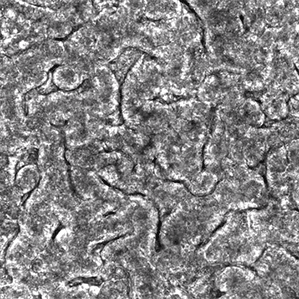Companies Aim to Make Drugs from Bacteria That Live in the Gut
Scientific discoveries in recent years suggest that some serious conditions could be cured by adding “good” bacteria to your digestive tract. Now several companies are racing to develop drugs that do so.

It’s a jungle in there: massive populations of microbes, immune cells, and cells of the gut tissue are interacting and exchanging countless chemical and physical signals. Disruptions to this complex ecosystem, often called the microbiome, have been linked not only to gastrointestinal problems but also to metabolic, immunological, and even neurological disorders.
One such problem, which occurs when a very common species of bacteria, Clostridium difficile, colonizes the gut and becomes too abundant, can be cured by adding good bacteria to the digestive tract—but the method for doing so requires a transplant of another person’s feces, and the reasons it works are not well understood. The next generation of microbiome medicines will instead be “real drugs” that are “easy to take, clean, and safe,” says Roger Pomerantz, CEO of Seres Therapeutics.
Seres, a six-year-old company that went public last year, has two drugs in clinical trials in the U.S. One is for recurrent Clostridium difficile infection and the other is for ulcerative colitis, a chronic inflammatory disease of the large intestine. Each drug is based on certain “keystone organisms” the company’s scientists have identified through sophisticated analysis of genetic information from microbes and human cells in the gut. Those keystone organisms are therapeutic because they can help restore the healthy microbiome after it has been disrupted, says Pomerantz.
Instead of directly modifying the microbial environment as Seres does, three-year-old startup Synlogic is developing genetically engineered bacteria, derived from species native to the human gut, that can be introduced and live in the microbiome without changing its overall composition. From there the engineered bacteria can perform therapeutic functions, like removing unwanted substances the body is retaining as the result of a metabolic disorder. The company draws on established methods from synthetic biology to introduce “genetic switches” so the microbes can sense and respond to their environment.
Alison Silva, Synlogic’s chief operating officer, says the company is aiming to have two drugs in clinical trials by sometime next year. Both are for rare genetic metabolic disorders caused by a deficiency of important enzymes in the liver, which leads certain metabolites to build up harmfully in the blood. The drugs are designed to remove the excess metabolites from the gut, where they tend to accumulate, and essentially compensate for the lost function in the liver.
Seres and Synlogic might just be scratching the surface of how the gut microbiome could be used. There is still a lot of science to be done. The idea that we could modify the microbiome “has tremendous potential,” says James Collins, a professor of biological engineering at MIT and a pioneer in the field of synthetic biology, who is also a scientific cofounder of Synlogic and an advisor to Seres. But although Seres has a “brilliant” tactic in introducing microbes to the gut in a pill to alter the microbiome, he says, in many cases we simply don’t know enough yet to be able to modify it in a therapeutic way. In the near term, Collins has higher hopes for using synthetic biology to make organisms that can sense and make specific changes to the environment in the gut.
Keep Reading
Most Popular
Large language models can do jaw-dropping things. But nobody knows exactly why.
And that's a problem. Figuring it out is one of the biggest scientific puzzles of our time and a crucial step towards controlling more powerful future models.
The problem with plug-in hybrids? Their drivers.
Plug-in hybrids are often sold as a transition to EVs, but new data from Europe shows we’re still underestimating the emissions they produce.
Google DeepMind’s new generative model makes Super Mario–like games from scratch
Genie learns how to control games by watching hours and hours of video. It could help train next-gen robots too.
How scientists traced a mysterious covid case back to six toilets
When wastewater surveillance turns into a hunt for a single infected individual, the ethics get tricky.
Stay connected
Get the latest updates from
MIT Technology Review
Discover special offers, top stories, upcoming events, and more.